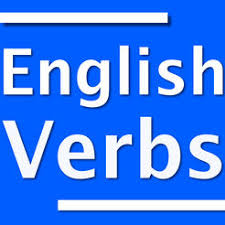What sets apart auxiliary verbs from linking verbs
This discussion of auxiliary verbs and linking verbs came from two columns I wrote in reply to two sets of very penetrating questions raised more than two years apart by South Africa-based Forum member Spelling.
In machine-gun fashion, Spelling first asked the following very basic grammar questions that defy quick and easy answers:
“Can you please tell me if the verb ‘have’ is ever used as an auxiliary in the present tense? As a full verb it can be used in a sentence like ‘I
have a book.’ Is that correct?
“The verb ‘be’ in the simple present tense can be used as an auxiliary, as in ‘Windows
are made of glass.’ Is that correct?
“The verb ‘do’ in the simple present tense can be used as an auxiliary, as in ‘
Does he play tennis?’ Is that correct?
“Are ‘have,’ ‘be,’ and ‘do’ noncontinuous verbs?”
If I attempted to answer these questions fast in the order that they were asked, I probably would create more bedlam than understanding about how English verbs behave. I thus thought it more prudent to begin by first defining the grammar terms involved.
Recall that a
verb is a word or phrase that describes an action, condition, or experience. It denotes either (a) what the subject of a sentence is doing or has done, like the verb “sing” in “She
sings a love song” and “watch” in “They
watched the parade”; or (b) indicates a state or situation of that subject, like the verb “were” in “We
were stunned by the testimony of the senator’s former bodyguard” and “exudes” in “She
exudes self-composure despite the mounting evidence against her.”
IMAGE CREDIT: ALLACCESSPASSBLOG.COM An
auxiliary or helping verb works with a main verb to form its tenses, voice, and modality, as the auxiliary “has” in “She
has denied guilt” where it works to form the present perfect tense of the verb “denied.” On the other hand, a
linking verb connects the subject of a sentence to its complement, as the linking verb “be” (in the past-tense form “were”) in “They
were lovers for seven years.” Take note that auxiliary verbs always need a main verb to function, but linking verbs are stand-alones that don’t need one.
IMAGE CREDIT: SLIDEPLAYER.COMNow we’re in an excellent position to answer the questions Spelling raised.
First, about “have,” which can either be a main verb or auxiliary verb: It definitely works as a main (stand-alone) verb in “I
have a book” to denote possession. However, “have” can never be used as an auxiliary in the present tense; it can only be used in the perfect tenses, as in “The alleged drug lord and her lover
have testified against the lady senator” (present perfect) and in “By early next year, the first tranche of the social security pension increase
shall have been implemented” (future perfect conditional).
Second, about “be”: It’s wrong to say that “be” (in the plural form “are”) works as an auxiliary in “Windows
are made of glass.” On the contrary, “are” is working as a linking verb connecting the subject “windows” to the adjective complement “made of glass” (a state of the subject).
Third, about “do”: Yes, it works as an auxiliary in “
Does he play tennis?” Indeed, one of the functions of the auxiliary “do” is to enable the main verb to form such questions.
Fourth and last: Are “have,” “be,” and “do” noncontinuous verbs? Yes.
Noncontinuous verbs like “hate” and “love” denote a state, not an action, and can’t be used in the continuous or progressive tense. This is why grammatically, we can’t say “We’re
hating that lying woman.” We can’t say “We’re
having/being/doing that lying woman” either, so those three are in fact also noncontinuous verbs.
(Next:
How many auxiliary verbs are there in English? - Part 6) November 22, 2018
This essay, 1,118th of the series, appeared in the column “English Plain and Simple” by Jose A. Carillo in the Campus Press section of the November 15, 2018 print edition of The Manila Times
, © 2018 by the Manila Times Publishing Corp. All rights reserved.----------------------
PARTS 1, 2, 3, 4, 5, 6, AND 7 (RETROSPECTIVE THAT STARTS OCTOBER 18, 2019 ):A full-dress review of the verb types in English - 1A full-dress review of the verb types in English - 2A full-dress review of the verb types in English - 3A full-dress review of the verb types in English - 4A full-dress review of the kinds of verbs in English – 5 THIS POSTINGA full-dress review of the kinds of verbs in English – 6A full-dress review of the kinds of verbs in English – 7